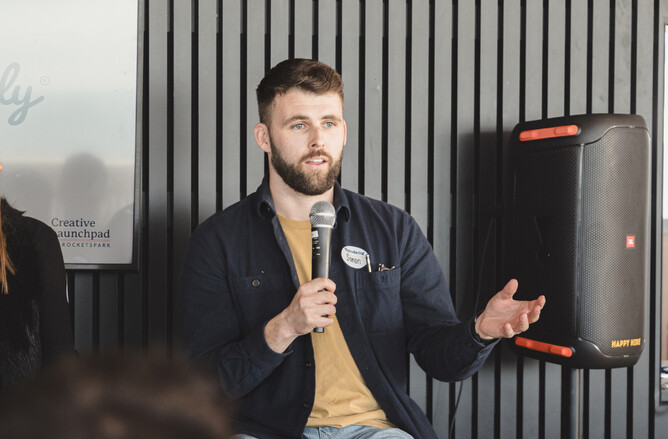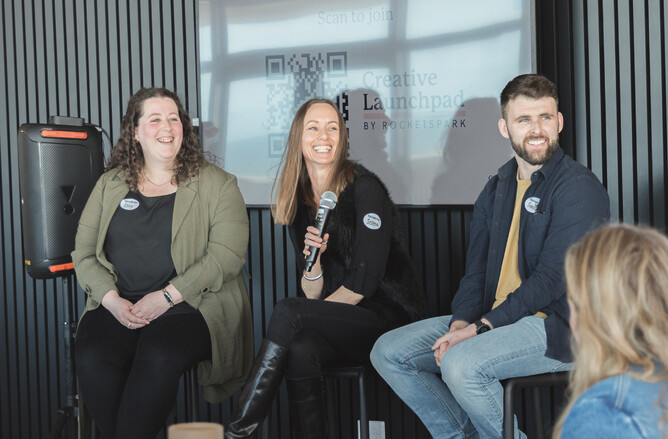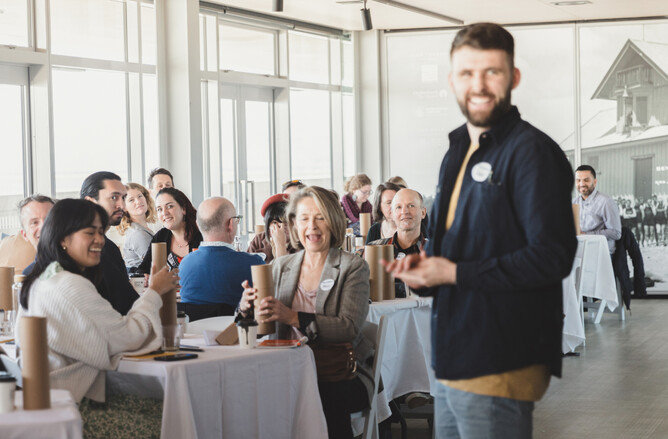Failure - it terrifies us all. Yet we’ve all been told at some point that “we learn from our mistakes.” Simon Dowding is a solopreneur who has been in the freelance game since 2020, after transitioning from in-house roles and he’s sure had his fair share of failure and success.
"If you're waiting for things to be perfect, you never do anything,” muses Simon. His words are extremely wise, as creatives it’s so easy to get caught up in our heads, wanting things to be absolutely perfect - yet a first draft is always better than no draft at all.
Simon has a fantastic analogy to describe this mentality - tattoos. As someone who loves tattoos, he used to think he should design his own, yet he soon realised his inner critic would always act as a handbrake. “I gave up on the idea of drawing my own tattoos because I knew I'd always be critical of them. Just like any of my designs, I'll always be able to pick out things that are wrong with them. But when I see someone else's work I just see a great piece of art,” he reflects. We are our own worst enemies as creatives, it pays to remember that.
So how can solopreneurs overcome the inner critic and embrace failure?
Re-writing one’s mindset is the first step. Rather than giving in to the voice in your head that says “It’s too hard, or not good enough” challenge yourself and push back against those fears. Ripping the bandaid and getting stuck into something is the hardest step, once you can overcome that - it only gets easier.
Next up is learning to embrace feedback. It’s not criticism, but rather an opportunity to improve and refine your craft. Design and creative pursuits are personal and often emotional, we pour our hearts into our work - leading to designers struggling with feedback, interpreting it as an attack on themselves. “What you create is never going to be perfect. So, the best way to improve it is to get feedback from people,” says Simon.
Simon has another fantastic analogy that encapsulates his perspective on failure. He likens it to skiing, “if you’re falling over when you’re skiing, then you’re improving.” The same goes for design, if you’re not falling short or hitting a road bump then you are testing yourself, and ultimately aren’t improving your craft - which as a solopreneur is essential.
Which leads us to risk. Simon urges designers to actively break their own bubble of comfort. If you want to win over clients and repeat work, not to mention build a brand of high-quality, innovative design, then you need to be adaptable and innovative. Keeping abreast of new technologies, micro changes in the design market, what consumers want and even what is trending on social media are all essential to a solopreneur toolkit. Doing this means taking risks, trying out new concepts and ways of working - most of all it means not becoming complacent or stuck in your ways.
Lastly, Simon recommends leaning on your friends and colleagues. Establishing a core network of trusted designers will allow you to talk over hard feedback, de-brief on failure and learn from those who may be experiencing something similar. Despite the root of the word ‘solopreneur’, you should aim to never work in a silo, as collaboration and fresh perspectives can be the key you didn't know you needed.




